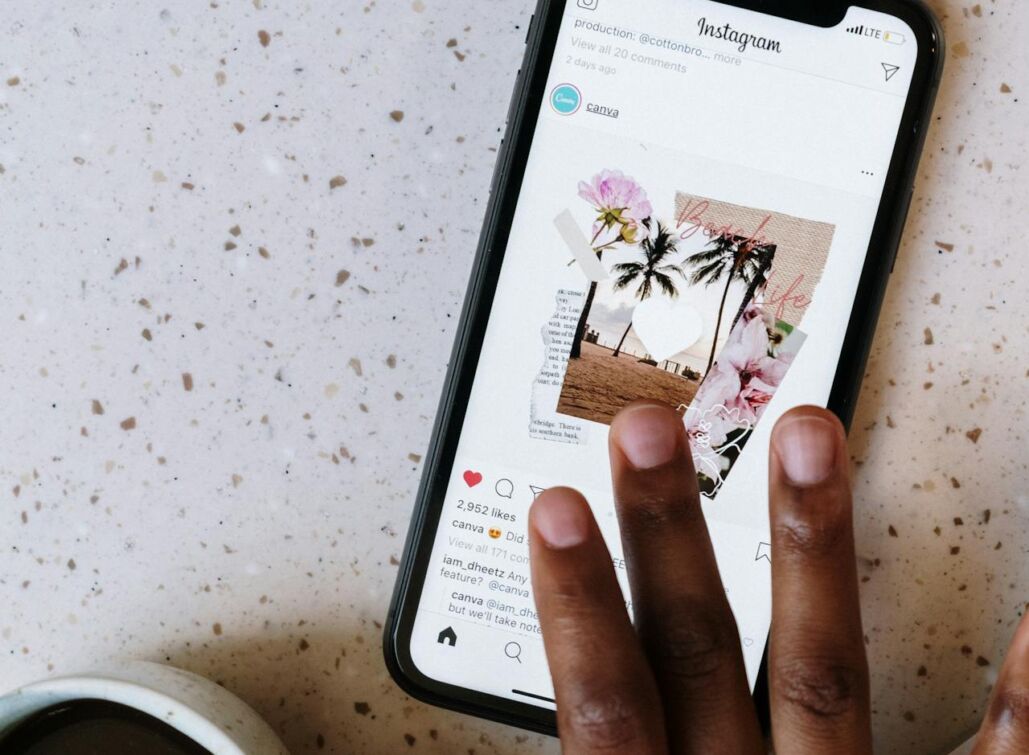Want to boost brand visibility? You need to be where your audience is — and they are most probably scrolling through their favorite social media platforms on different platforms.
That’s because it’s a highly effective digital marketing channel for B2B and B2C brands. Here, you can show your expertise, promote products to the target audience, and participate in the trendiest conversions.
Result? You can:
- Foster personal bonds
- Drive engagement with compelling storytelling
- Increase credibility
- Boost conversion
That’s why 95% of marketers prefer social media for brand campaigning.
Understanding brand visibility
What is brand visibility?
Brand visibility refers to the extent to which a brand is seen and recognized by its target audience across various marketing channels. Branding plays a crucial role in establishing brand visibility and awareness. It is a crucial aspect of building a strong brand identity and increasing brand awareness. When consumers recognize your brand, they are more likely to engage with your content, trust your products, and become loyal customers. Brand visibility can be measured through various metrics, including website traffic, social media engagement, and search engine rankings. By ensuring your brand is visible across multiple channels, you can reach a wider audience and create a lasting impression.
Measuring brand visibility
Measuring brand visibility is essential to understanding the effectiveness of your marketing efforts and identifying areas for improvement. It is also important to measure brand awareness to get a comprehensive understanding of your brand’s market presence. Key metrics to track include website traffic, search engine rankings, social media reach, and engagement. Analytics tools such as Google Analytics can provide valuable insights into these metrics, helping businesses optimize their marketing strategies. For instance, tracking website traffic can reveal how many potential customers are visiting your site, while social media engagement metrics can show how well your content resonates with your audience. By regularly measuring these key metrics, you can make data-driven decisions to enhance your brand’s visibility and overall success.
What is social visibility?
Social visibility refers to how prominently a brand or individual appears across various social media platforms. Maintaining active social accounts is essential for creating a consistent brand presence. It’s not just about the number of views or followers; it’s about creating a consistent way for the audience to perceive and interact with your brand. A strong social visibility means your brand is easily recognizable and consistently present in the minds of your audience. This extends beyond mere visibility to building a robust social identity that resonates with your target audience.
Staying on top of social conversations
In today’s fast-paced digital world, real-time social media monitoring is essential for staying on top of social conversations about your brand or individual profile. Engaging with social media users is crucial for boosting your brand’s visibility. With advanced technology, you can track social mentions across various platforms, including social networks and the web. This helps streamline your online presence tracking efforts and is a huge time saver.
Setting up email alerts is a practical way to ensure you never miss important customer feedback or brand mentions. These alerts notify you in real-time about new social mentions, allowing you to respond promptly and maintain a positive brand image. By leveraging real-time monitoring, you can stay informed about what’s being said about your brand, engage with your audience effectively, and make data-driven decisions to boost your social visibility.
But social media is a competitive channel. How do you ensure that your audience remembers your brand after tapping the like button? Here are 10 strategies, with B2B and B2C examples, to help you gain meaningful visibility on social media.
10 strategies to improve and increase brand visibility in social media search
These strategies will keep you on top of your audience’s feed and their mind: Tracking brand visibility metrics will help you understand how effectively you are capturing audience attention. Repurposing content, such as transforming a podcast into a blog post, can maximize reach and engagement.
Optimize your profile for search
According to 86% of social media marketers, social search is important to their overall strategy. But not everyone will be searching for your brand name, right?
You must optimize your social handle to ensure your profile shows in search results. Only then will new users explore your profile and engage with your content. Your follower count and your visibility and brand awareness will increase.
First, try to use your brand name as your username. Choose the closest variation if unavailable without using too many special characters or numbers. You want to be discovered and nobody is really searching for those. Your username should also be consistent across all platforms. Consistent usernames across social media profiles enhance discoverability.
Now, let’s talk about your bio. It should be short and catchy and reflect your mission and unique value proposition. The audience should understand exactly what you do at a glance. Incorporate targeted keywords in your bio to improve searchability.
B2B companies should describe their product on their profile so that the audience knows the features before they explore your website. It will hook their attention and drive traffic to your website. This approach can also help you reach new audiences who are interested in your product features.
If you don’t already have a site, use marketplace software to build one and add the link to your bio. This will help you turn social media traffic into tangible online sales. This will not only drive sales but also contribute to increased brand awareness.
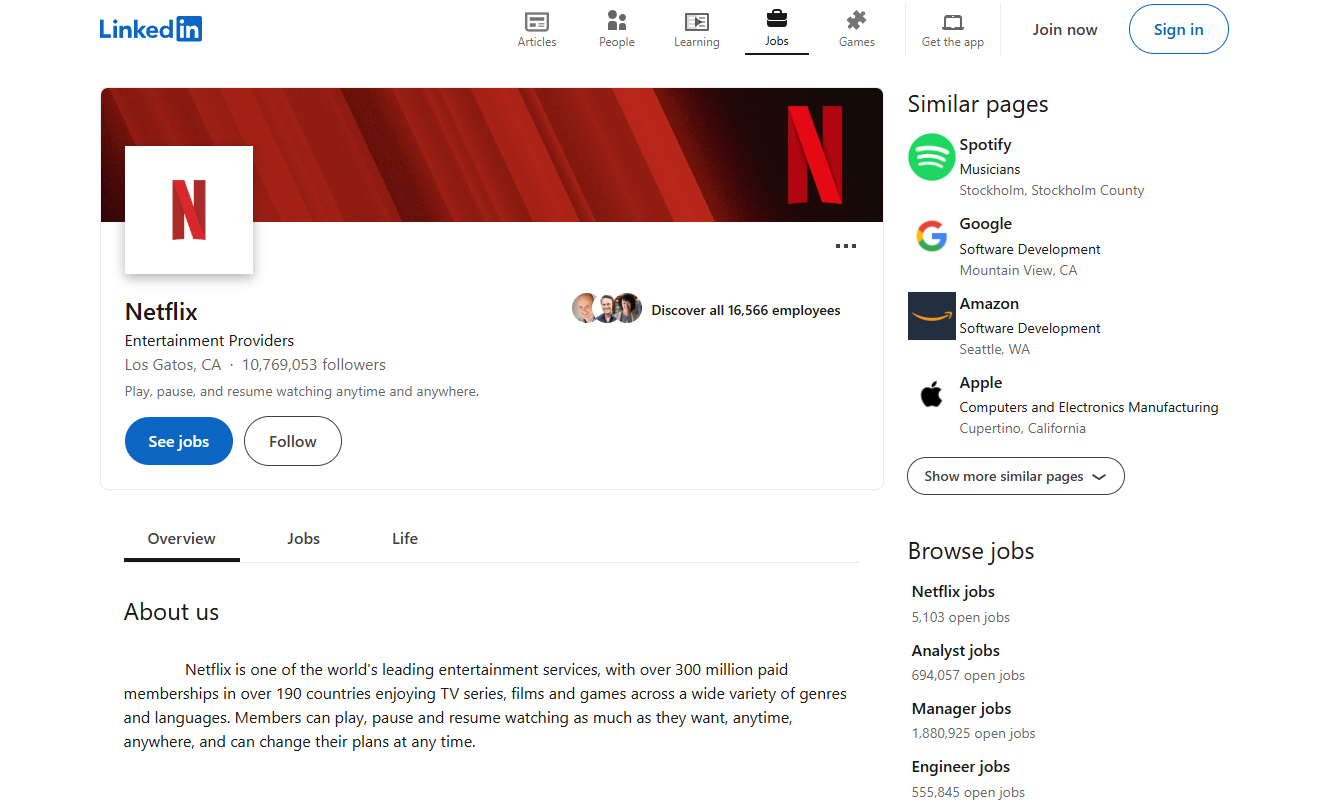
For example, social media monitoring software Netflix’s LinkedIn bio is short and communicates what the tool does in just one short sentence. The brand describes its product and mentions the target roles (like managers and engineers). The profile also mentions they can “change their plans at any time” to sweeten the deal.
Add links to your bio. It can be your website homepage, product page, event page, any ongoing offers, and other social handles.
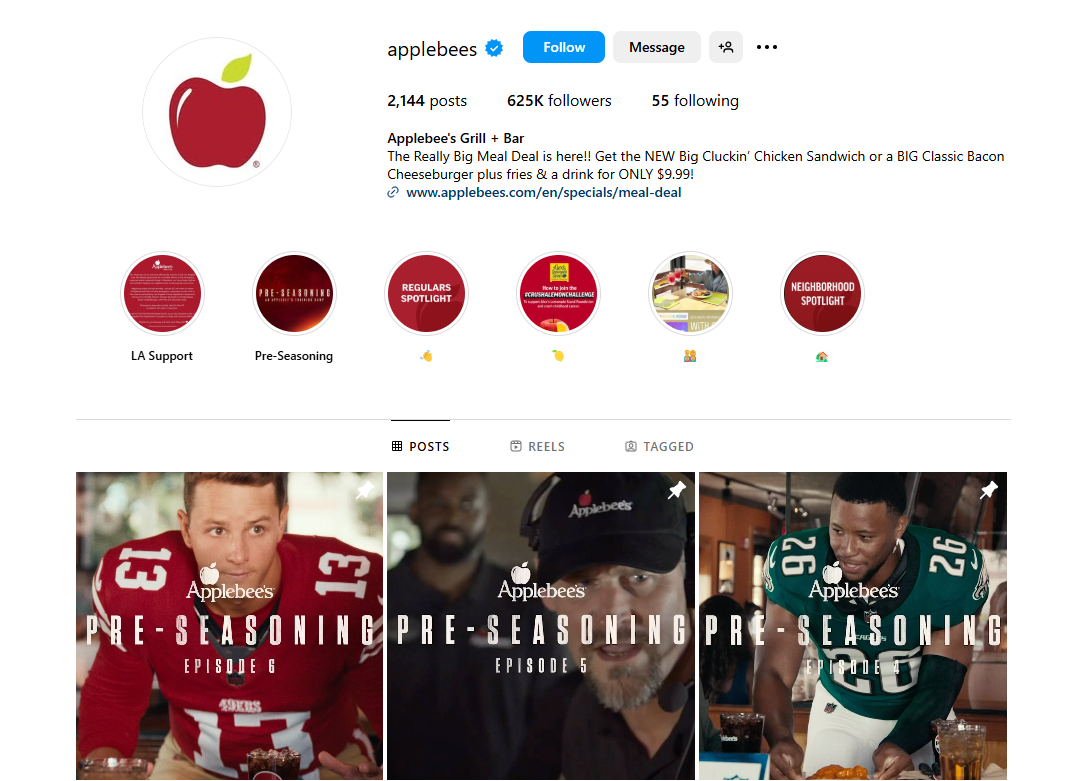
Applebee’s Instagram page is an excellent example of an optimized social handle. Their bio talks about the brand’s ongoing deal. There is also a direct link to the special offer page.
You can use tools like Linktree to list all the links in one place. This will give your bio a cleaner look while also enhancing discoverability.
Add relevant keywords in your bio and posts
Adding industry-specific keywords to your profile improves discoverability. That way, your page will appear when the target audience searches for those keywords. Conduct thorough keyword research to identify the most relevant terms for your industry.
First, list common words people may use to describe your products. Then, search them to find relevant keywords and search volume.
Include them in your bio and post captions. You can use variations to align them with audience search behavior and individual posts.
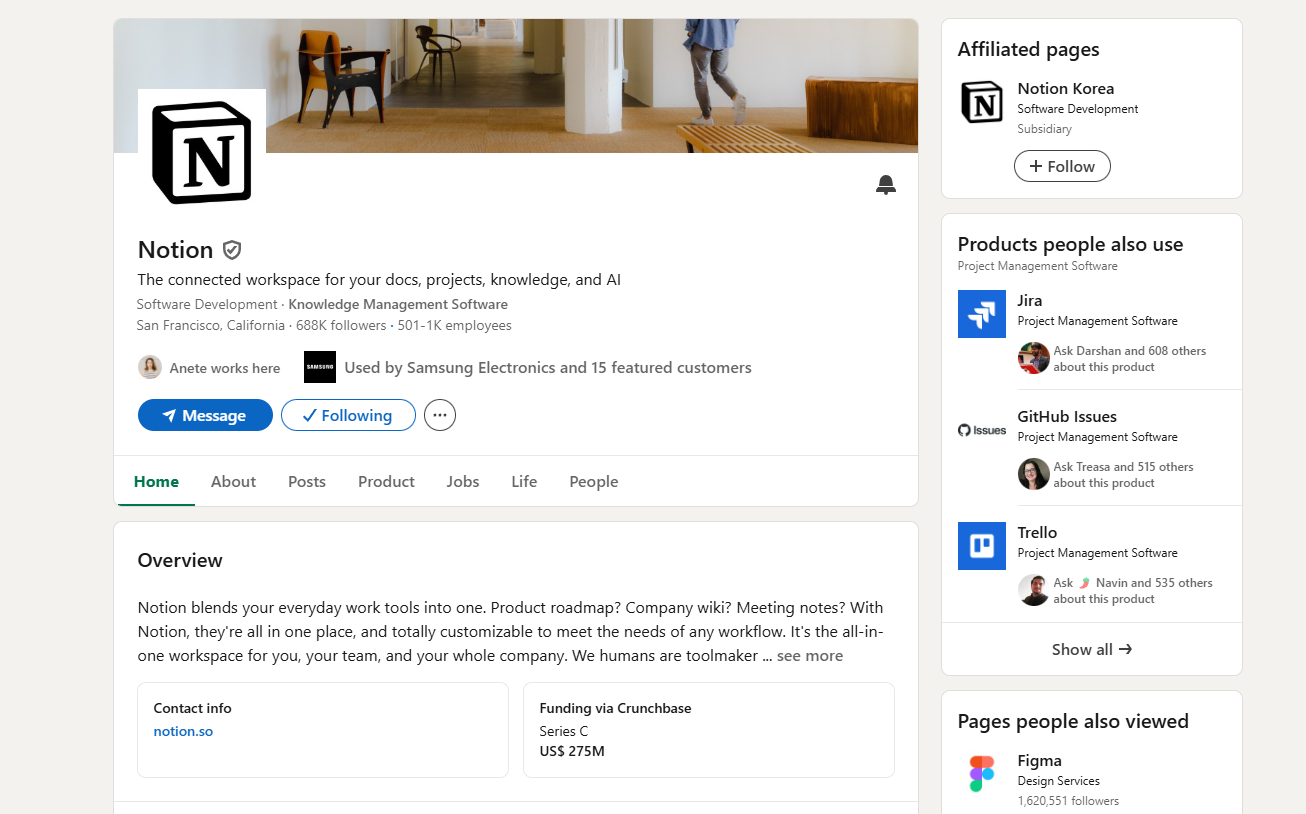
For example, here is Notion’s LinkedIn profile. The overview is informative and SEO optimized for better discoverability.
Make sure you use keywords while staying true to your brand personality.

For example, Starbucks’ bio says “Time for Coffee”, which is fun but also informs the audience about what the brand does.
Analyzing competitors will also give you a fair idea of how to add keywords on social handles effectively. You can also invest in online training software and train your team on social media SEO, competitor analytics, and audience behavior monitoring.
That way, your entire team can contribute to improving social media visibility, ensuring your posts and captions stay relevant with search intent.
Use hashtags strategically
Another must-have element for social media visibility is hashtags. Adding trending hashtags makes the algorithm categorize your content and push it into relevant feeds. Your posts get more engagement, enhancing discoverability further.
It must resonate with your audience’s interests and preferences and be relevant to the post’s messaging. Only then will the right people discover and engage with your content.
Don’t go overboard with the hashtags. It will make your caption look messy. While the optimum number of hashtags depends on your brand, adding 2 to 3 mostly does the job.
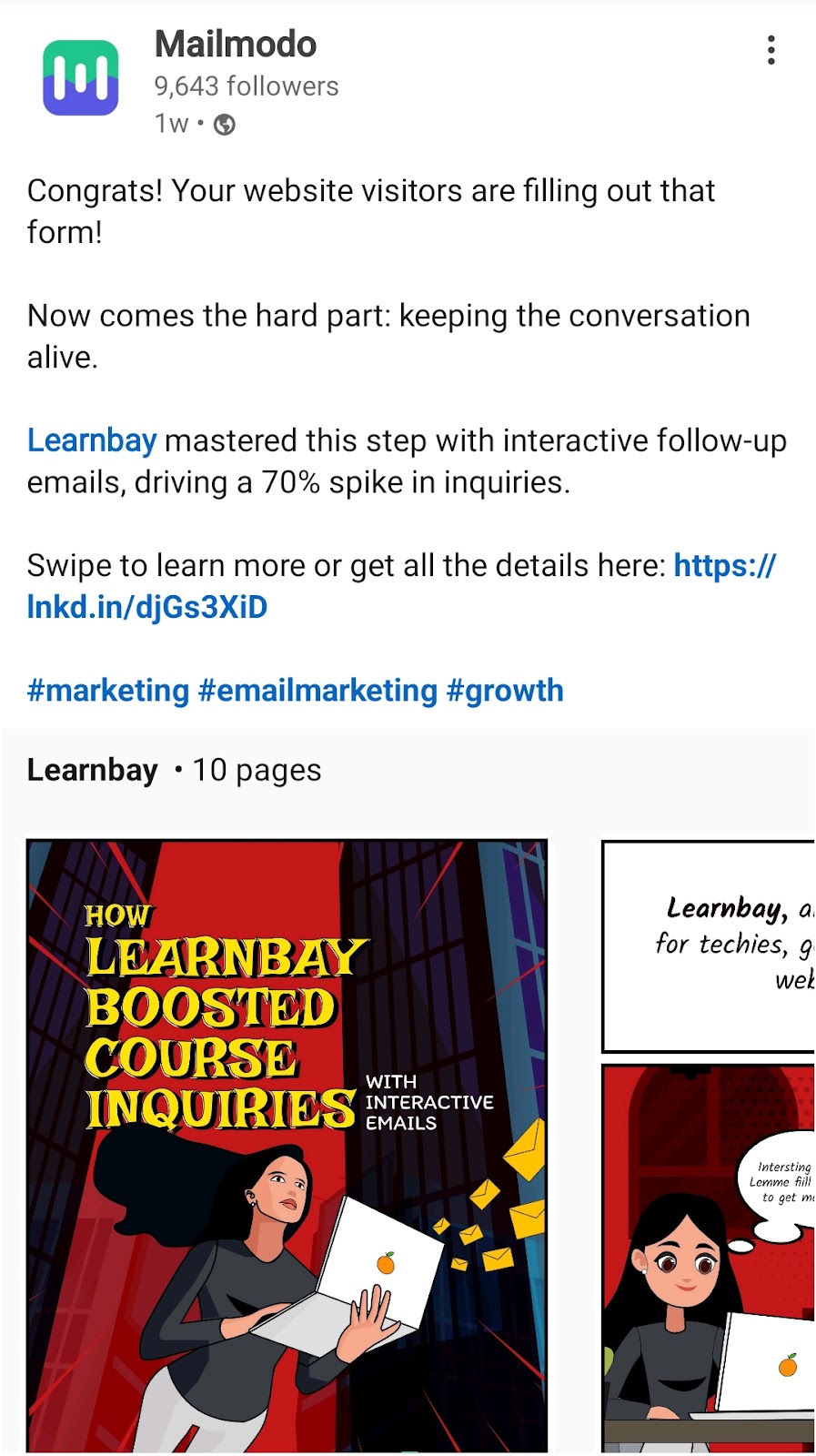
For example, Mailmodo, an email marketing platform, added only 3 keywords to the above post as hashtags. However, they ensured the tags were relevant to their brand and post so the right audience could find them.
You can create branded hashtags to encourage conversations around your product and campaigns. The more traction these hashtags get, the more visible your posts will be. Branded hashtags also help keep your UGCs organized and easily discoverable.
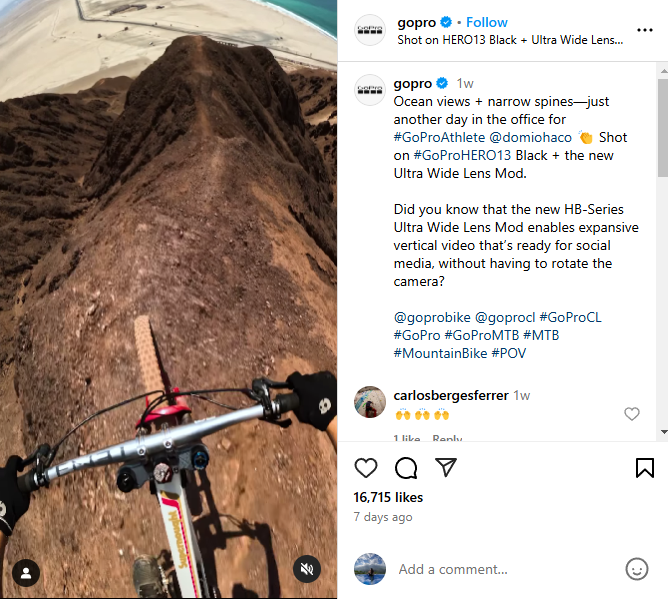
GoPro’s Instagram posts always have branded hashtags, whether they post UGC or their content. The brand also uses different variations to ensure search optimization.
You can also use community hashtags to give your audience a sense of belonging. It encourages conversations on the brand, spreads word-of-mouth, and boosts visibility.
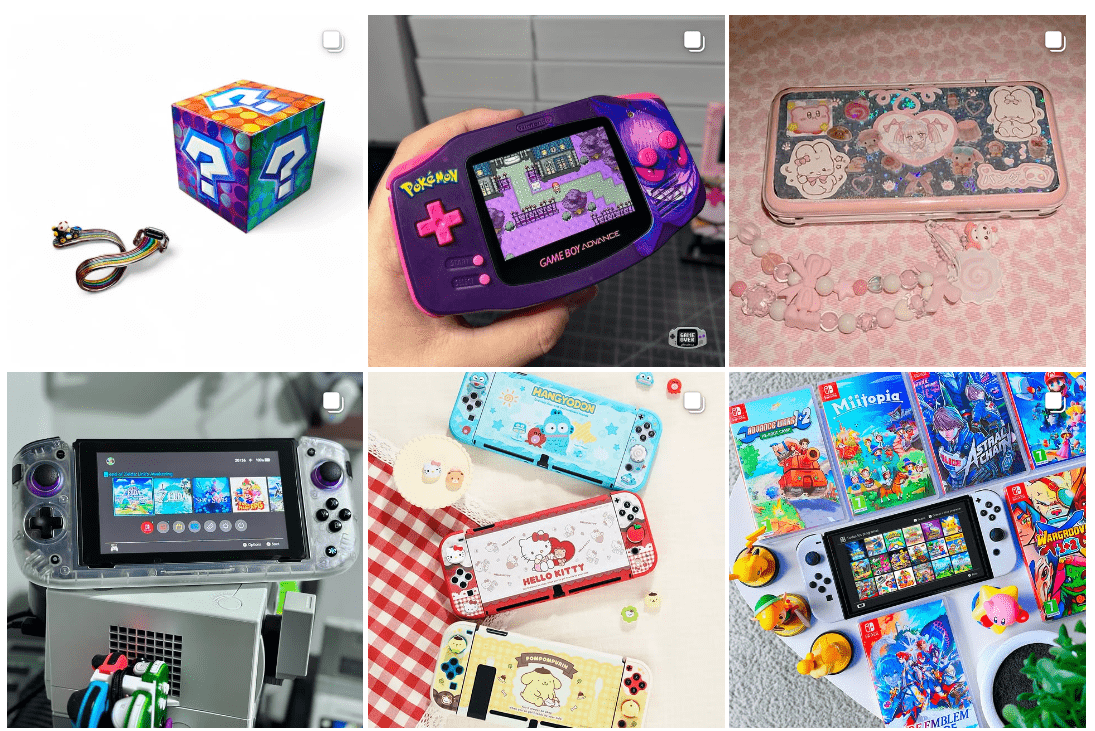
For example, #nintendolife generates thousands of posts from Nintendo fans.
Create high-quality, shareable content
Your social media reach highly depends on your content’s shareability. Every share shows the algorithm that the audience loves your posts, prompting it to push it into more feeds. With enough shares, your posts may even go viral.
Focus on your content’s visual appeal. They capture attention and encourage shares. Create a mix of fun content and insightful posts that address specific challenges. The former maintains relevance while the latter showcases your expertise, boosting reposts from a wider audience.
Social media platforms like Instagram and Facebook love reels. So, try to create at least two reels weekly to boost the engagement of your reels. Monitoring video completion rate can provide insights into how engaging your video content is.
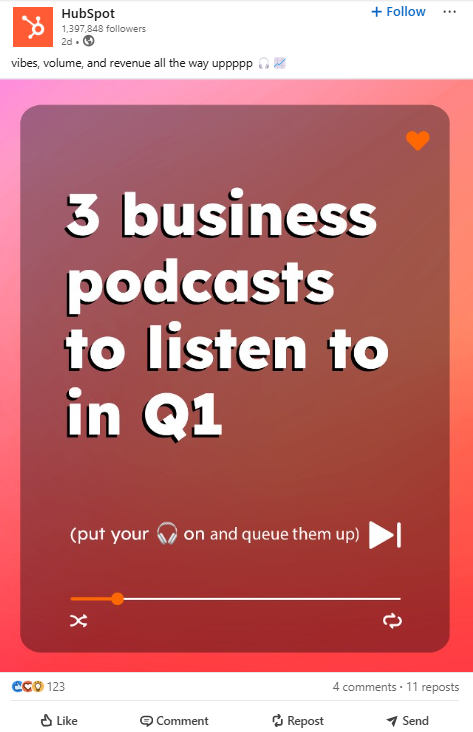
For example, staying true to popular marketing expertise, HubSpot posts informational content on industry topics. The posts are short, catchy, and deliver value.

The brand also creates fun content to connect with the viewers and encourage shares. For example, the above reel got 200+ reshares on Instagram.
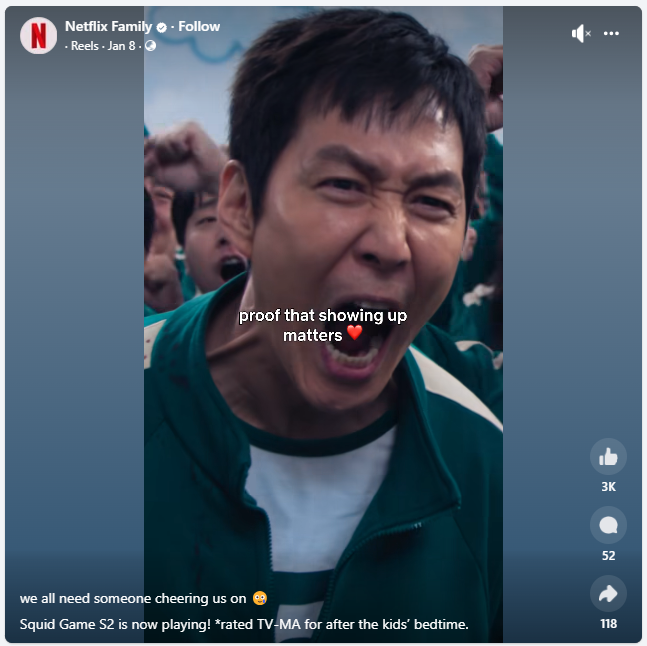
Netflix cracked the reel game, driving phenomenal engagement and shares on their social handles. The brand posts clips from their viral shows. For example, the above Facebook reel is a fan-favorite moment from the long-anticipated Squid Game Season 2.
Engage with your audience consistently
Do you know what makes social media so appealing? Beyond the quick entertainment, it’s the human connection. They can speak their minds, give opinions, and connect with people over shared interests.
Think about it this way. If you attend a party, you won’t just stand in the corner and not talk to anyone, right?
Similarly, you must engage with your audience directly to get organic reach and visibility. Doing it consistently will make your brand relatable, improve loyalty, and drive content engagement. Regular interaction with your audience can foster a sense of community and loyalty.
Use a social media monitoring tool to track conversions around your brand and industry. Participate in those conversations frequently.
Monitor comments on your posts and reply according to your brand’s personality. You can also resolve customer queries directly on social handles. It:
- Improvers user satisfaction and brand reputation
- Drives further replies
- Boosts engagement and visibility.
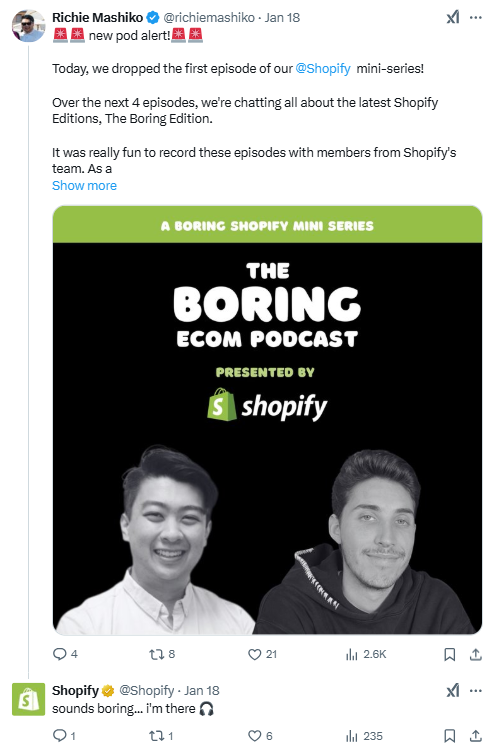
For example, an X user tweeted the launch of their podcast series on Shopify. Staying true to their brand’s playful personality, Shopify replied.
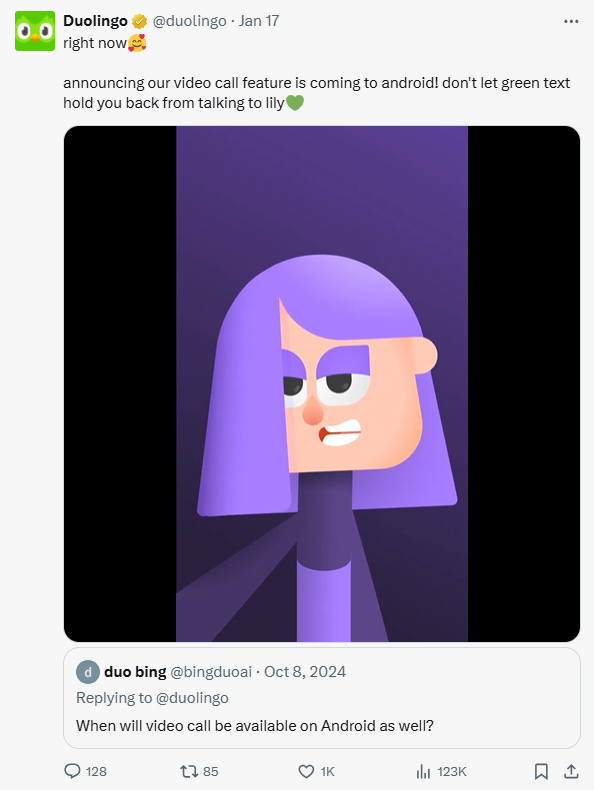
Duolingo also has a thriving community of language learners on X. The brand replies to tweets and customer requests in their signature quirky style.
Collaborate with influencers or partners
Closed deal on a new partnership with another brand? Leverage their reach by promoting collaboration on social media. It gives your brand credibility and makes your campaigns more visible to the partner brand’s followers. Building relationships with partners can expand your reach and enhance brand visibility.
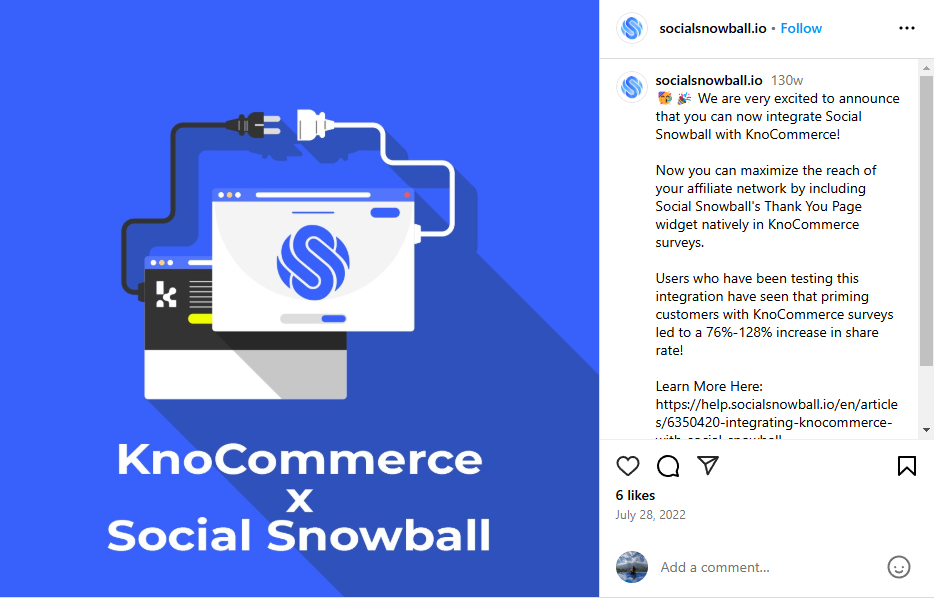
For example, Social Snowball announced its integration with KnoCommerce on Instagram.
Influencers dominate the current social media scene. Whatever they say, goes. If the right influencer vouches for your product, it automatically gives you credibility with the creator’s fans.
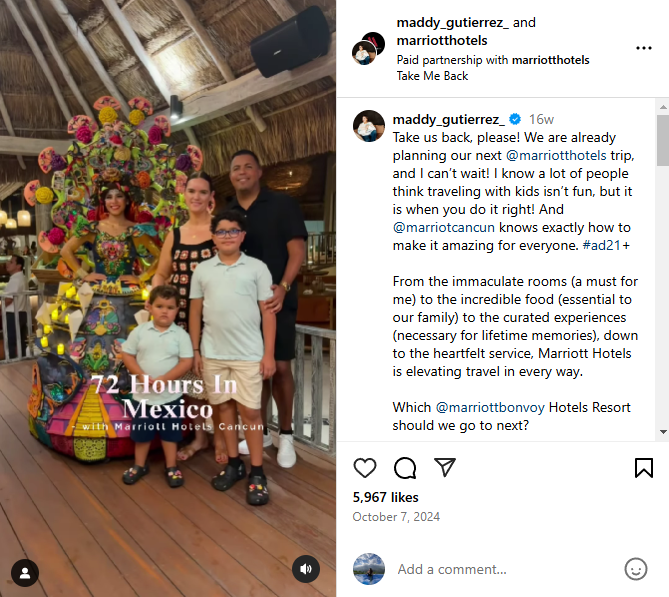
For example, JW Marriott partnered with popular lifestyle influencer Maddy Gutierrez on the above post. The creator documented the 3 days they spent in the Marriott Hotel Cancun and how much they enjoyed their stay.
Reports note that 43% of customers look for authenticity in influencer posts, even when they are sponsored content. So, collaborate with creators with relevant experience and following in your domain, and a squeaky-clean reputation. Monetize these partnerships by ensuring your campaigns align with the influencer’s audience preferences and offer mutual value.
You must give the influencer creative liberty because they know exactly what appeals to their followers. It will keep their sponsored posts from looking overtly sales-y. Free products from your best sellers will keep them satisfied. You can also offer custom swag that you can get from a print-on-demand business. It will create a sense of belongingness and pave the way for genuine influencer collaboration.
Try paid social ads for targeted visibility
If you have the budget, consider investing in targeted ads to boost visibility. Analyze customer data and trending topics. This ensures your ads target the right audience and hook their interest with the most current conversations.
Segment your audience and run specific ads on relevant feeds and stories. Add a clear and compelling call to action to drive traffic to your site. Combining paid ads with a strong SEO strategy can maximize your brand’s online presence.
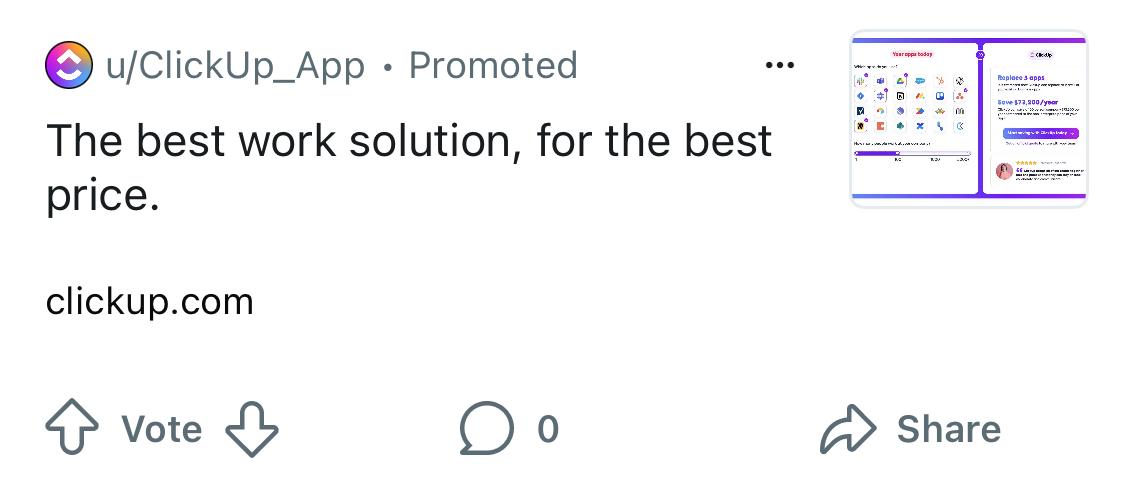
If you are a B2B brand, target platforms like Reddit and LinkedIn. For example, here is a straightforward Click Up ad on Reddit.
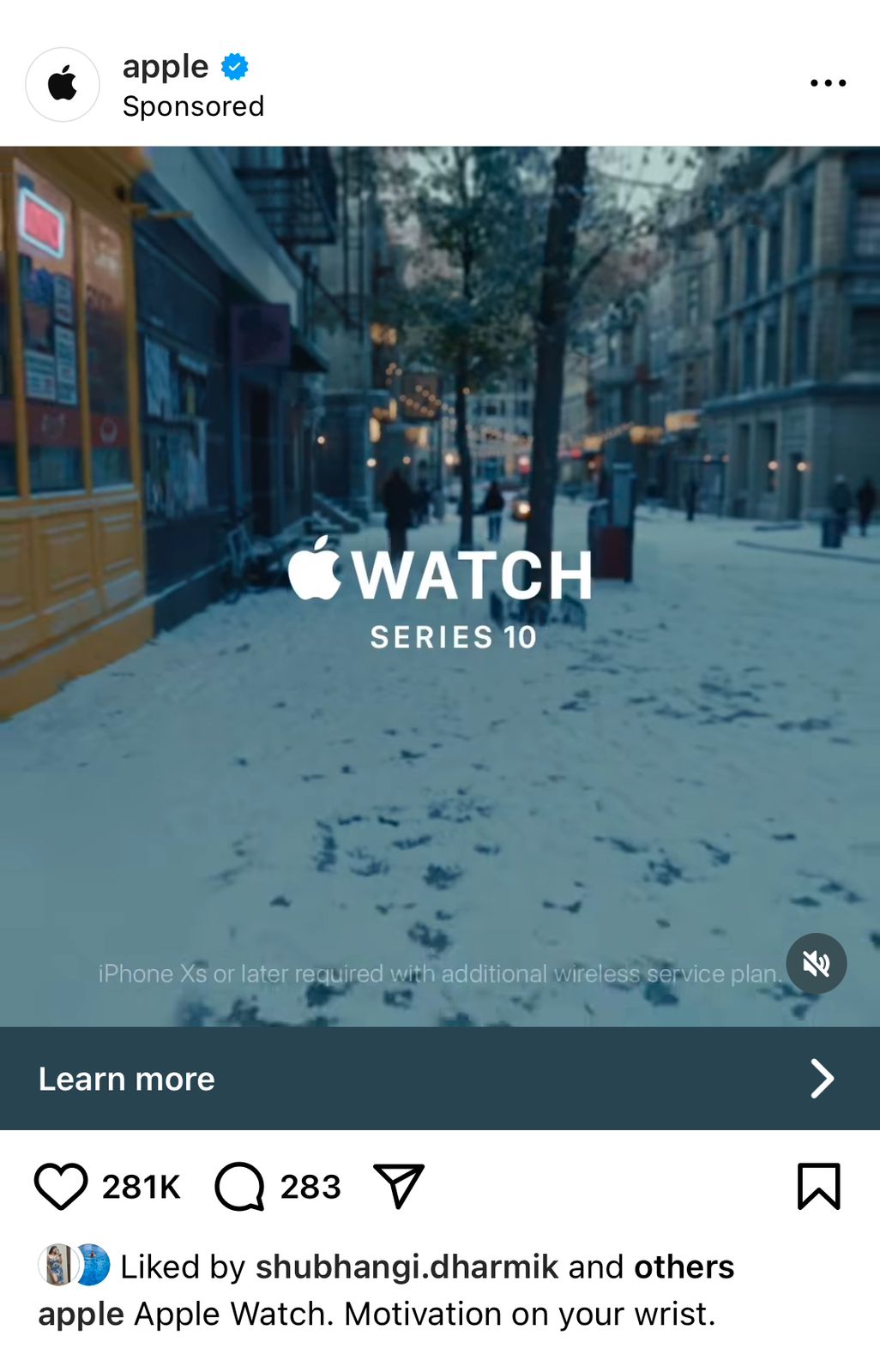
For B2C brands, ads deliver better results on Instagram, TikTok, and Facebook. That’s why these are Apple’s preferred social media marketing channels.
However, an unchecked number of paid ads will quickly add up costs. So, audit your marketing budget beforehand to ensure maximum ROI. Leveraging fractional COO companies can help establish precise budget control mechanisms and ROI tracking frameworks while optimising your ad spend across platforms.
Post at optimal times for your audience
Even if your posts check all the boxes, posting them randomly won’t affect your visibility much. You must target time windows when your audience is the most active to maximize reach and engagement.
Analyze audience behavioral data to see when they engage with social media the most. The ideal time is to post before or after the work hours. However, the best posting time depends on your industry.
Invest in a reliable social media monitoring tool to know the accurate time to post. You can schedule multiple posts there to make sure they get published at the right time without fail.
The posting frequency should be optimal too. Too many consecutive posts may overwhelm the audience while too few of them will make them forget you.
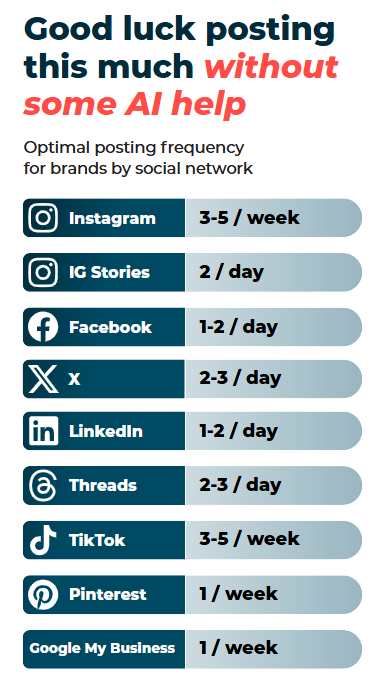
A 2025 report pointed out the above frequency as optimal for social media posting. You can follow this or tap into social media analytics to find the right frequency.
Whatever frequency or posting time you choose, make sure you are consistent. It builds anticipation, maximizes engagement, and, in turn, improves brand visibility over time. Posting at optimal times across different marketing channels ensures maximum visibility.
Analyze and adapt based on performance metrics
Social media trends change rapidly. What’s working for your brand may not drive the same results next week. Staying agile and tweak your strategies to maintain consistent visibility is important.
Key metrics to track
To effectively measure social visibility, it’s crucial to track specific social media metrics that provide insights into your online presence. Here are some important ones:
- Presence score: This score indicates how often and positively your brand or individual profile appears online. It’s a comprehensive measure of your overall visibility.
- Social media reach: This metric shows the number of people who view your content on social media platforms. A higher reach means more potential customers are seeing your posts.
- Mentions: Track the number of times your brand or individual profile is mentioned on social media. This helps gauge how much buzz your brand is generating.
- Sentiment: Analyze the overall sentiment of the mentions, whether they are positive, negative, or neutral. Understanding sentiment helps in assessing public perception.
- Engagement rate: Measure the number of likes, comments, and shares your content receives. High engagement indicates that your content resonates well with your audience.
By keeping an eye on these metrics, you can gain a comprehensive understanding of your social visibility and make informed decisions to enhance your online presence.
The best practice here is to set a benchmark for each KPI according to current industry standards and competitor performance. Then you should compare your campaign’s performance, and adjust your strategies accordingly.
You can use social reporting tools like Sotrender to measure and optimize social media metrics. You will find actionable insights, benchmarking reports, and data-driven suggestions to improve visibility. Regularly measure brand visibility to stay ahead of trends and maintain engagement.
Encourage UGC and reviews
It’s your brand. So, of course, you will praise it. But why should the customer believe it? You can back up your claims with customer testimonials and UGC. These are direct accounts from real customers and act as social proof.
B2B brands can ask their happy customers for testimonials and turn them into videos for social media.
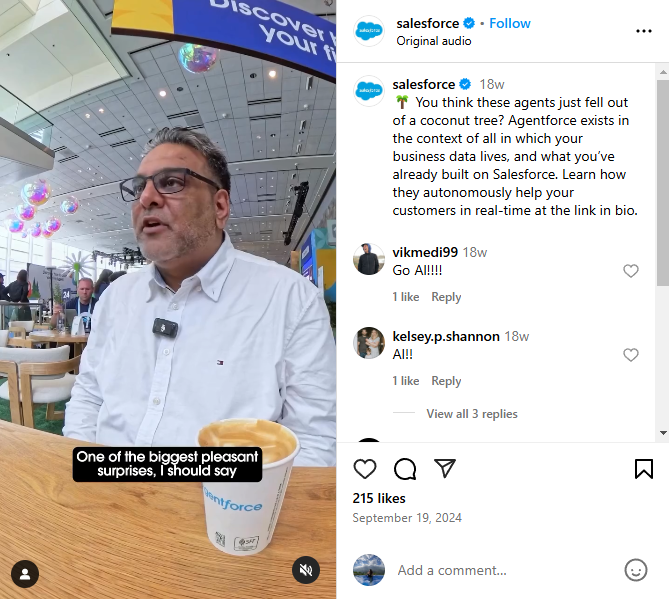
Salesforce asks for testimonials from their users attending the brand’s events and compiles them into Instagram videos. For example, users talk about how Agentfirce, a customizable AI agent created by Salesforce, streamlined their customer service and other business operations.
If you are a B2C brand, you can collect user-generated content through branded hashtags and contests and post them on your handles. Don’t forget to credit the OG creator.
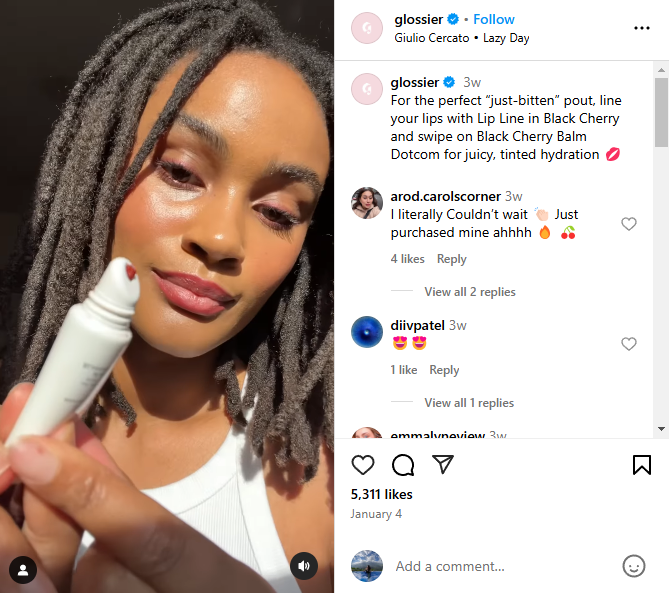
Glossier is a master of UGC marketing on social media. Most of their feed features real customers using their products. The posts are authentic and showcase the products’ value effectively.
Such a commitment to using social proof drives massive engagement and visibility for the brand’s social media handles. You will rarely encounter a conversation about beauty creators that doesn’t mention Glossier. Positive reviews on key review sites can significantly enhance your brand’s credibility.
Conclusion
Social media algorithms are quite finicky. But if you follow these strategies diligently, your visibility will improve. In the early stages of building your social media presence, focus on engaging content and user interactions to reach a new audience.
Optimize your profile with keywords and links and use hashtags creatively. Run contests to collect UGC and display them on all your social handles. Engage with your audience, partner with the right influencers, and maintain optimal posting time and frequency. Use social listening tools to respond to negative feedback and improve your brand’s reputation.
Finally, measure performance and analyze competitors regularly to adjust strategies.
